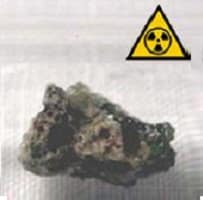We elaborate the uses of Niobium and atomic properties with characteristics. Niobium is a metallic gray chemical element with atomic number 41. Its symbol is Nb and it belongs to the group of transition metals and its normal state in nature is solid. Niobium is located at position 41 on the periodic table.
You Can Visit Our Managed: Periodic Table Main Page
On this page you can discover the chemical properties of niobium and information about niobium and other elements of the periodic table such as vanadium, tantalum, zirconium or molybdenum. You will also learn what niobium is for and you will know its uses through its properties associated with niobium such as its atomic number or the usual state in which niobium can be found.
You can see qualities of niobium such as its melting and boiling point, its magnetic properties or what its chemical symbol is. Also, here you will find information about its atomic properties such as the distribution of electrons in the niobium atoms and other properties.
For some elements, part of this information is unknown. In these cases we show the properties attributed to them.
Niobium properties
The transition metals, also called transition elements, is the group to which niobium belongs. In this group of chemical elements to which niobium belongs, are those located in the central part of the periodic table, specifically in block d. Among the characteristics that niobium has, as well as those of the rest of transition metals, is to include in its electronic configuration the d orbital, partially filled with electrons. Properties of this type of metals, among which niobium is found, are its high hardness, having high boiling and melting points and being good conductors of electricity and heat.
The state of niobium in its natural form is solid. Niobium is a chemical element with a metallic gray appearance and belongs to the group of transition metals. The atomic number for niobium is 41. The chemical symbol for niobium is Nb. Niobium’s melting point is 2750 degrees Kelvin or 2477.85 degrees Celsius, or degrees Celsius. The boiling point of niobium is 5017 degrees Kelvin or 4744.85 degrees Celsius or degrees Celsius.
Uses of niobium
Niobium is used in alloys, including stainless steel. Improves the strength of alloys, particularly at low temperatures. Niobium-containing alloys are used in jet and rocket engines, beams and girders for buildings and oil rigs, and oil and gas pipelines.
This element also has superconducting properties. It is used in superconducting magnets for particle accelerators, MRI scanners, and NMR equipment.
Niobium oxide compounds are added to glass to increase the index of refraction, allowing corrective lenses to be made with thinner lenses.
Atomic Properties of Niobium
The atomic mass of an element is determined by the total mass of neutrons and protons that can be found in a single atom belonging to this element. As for the position where to find niobium within the periodic table of elements, niobium is in group 5 and period 5. Niobium has an atomic mass of 92.90638 u.
The electron configuration of niobium is [Kr] 4d4 5s1. The electronic configuration of the elements determines the way in which the electrons are structured in the atoms of an element. The mean radius of niobium is 145 pm, its atomic radius or Bohr radius is 198 pm, and its covalent radius is 137 pm. Niobium has a total of 41 electrons whose distribution is as follows: In the first shell it has 2 electrons, in the second it has 8 electrons, in its third shell it has 18 electrons, in the fourth, 12 electrons and in the fifth shell it has 1 electron.
You Can Visit Our Managed: Periodic Table Main Page
Niobium characteristics
Below you can see a table that shows the main characteristics of niobium.
| Niobium | ||
|---|---|---|
| Chemical symbol | Nb | |
| Atomic number | 41 | |
| Group | 5 | |
| Period | 5 | |
| Appearance | metallic gray | |
| Block | d | |
| Density | 8570 kg / m3 | |
| Atomic mass | 92.90638 u | |
| Medium radius | 145 pm | |
| Atomic radio | 198 | |
| Covalent radius | 137 pm | |
| Electronic configuration | [Kr] 4d4 5s1 | |
| Electrons per shell | 2, 8, 18, 12, 1 | |
| Oxidation states | 5.3 | |
| Oxide | slightly acid | |
| Crystal structure | body-centered cubic | |
| State | solid | |
| Melting point | 2750K | |
| Boiling point | 5017K | |
| Heat of fusion | 26.4 kJ / mol | |
| Vapor pressure | 0.0755 Pa at 2741 K | |
| Electronegativity | 1.6 | |
| Specific heat | 265 J / (Kkg) | |
| Electric conductivity | 6.93106S / m | |
| Thermal conductivity | 53.7 W / (K m) | |
You Can Visit Our Managed: Periodic Table Main Page





